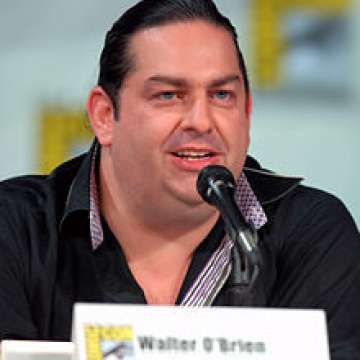

J. Robert Oppenheimer (1904-1967)
The Father of the Atomic Bomb
Introduction
J. Robert Oppenheimer, a name synonymous with the atomic age, stands as one of the most influential and controversial figures in modern history. Known as the "father of the atomic bomb," Oppenheimer's contributions to physics and his role in the Manhattan Project have left an indelible mark on science and society. This biography delves into the life, achievements, and legacy of this remarkable genius.
Early Life and Education
Childhood and Family Background
Julius Robert Oppenheimer was born on April 22, 1904, in New York City, to Julius Oppenheimer, a wealthy textile importer, and Ella Friedman, a painter. His family was of Jewish descent, with his father emigrating from Germany and his mother being a New York native. Raised in an intellectually stimulating environment, young Robert showed early signs of brilliance and curiosity.
Education
Oppenheimer's education began at the Ethical Culture School in New York, where he excelled in various subjects, particularly science. He later attended Harvard University, graduating summa cum laude in 1925 with a degree in chemistry. Oppenheimer then pursued further studies at the University of Cambridge's Cavendish Laboratory, where he transitioned to theoretical physics under the mentorship of J.J. Thomson. He completed his Ph.D. at the University of Göttingen in Germany in 1927, where he studied under Max Born and interacted with prominent physicists such as Werner Heisenberg and Wolfgang Pauli.
Scientific Achievements
Early Research and Contributions
Oppenheimer's early work in quantum mechanics and quantum field theory laid the groundwork for his future contributions. His research on electron-positron theory and the Oppenheimer-Phillips process, which explained the behavior of deuterons in nuclear reactions, earned him significant recognition in the scientific community.
The Manhattan Project
The Road to Los Alamos
In 1942, with World War II raging and fears of Nazi Germany developing nuclear weapons, the U.S. government launched the Manhattan Project, a top-secret initiative to build an atomic bomb. Oppenheimer was appointed scientific director of the project, a role that would define his career. He assembled a team of the brightest minds in physics at a secret laboratory in Los Alamos, New Mexico.
Development of the Atomic Bomb
Under Oppenheimer's leadership, the Los Alamos team achieved remarkable scientific and engineering feats. The culmination of their efforts was the successful test of the first atomic bomb on July 16, 1945, at the Trinity site in the New Mexico desert. The bombings of Hiroshima and Nagasaki in August 1945, which followed soon after, marked the end of World War II but also ushered in the nuclear age, forever changing the course of history.
Nobel Prizes and Recognition
Nobel Prize Nominations
Despite his monumental contributions to science and the development of the atomic bomb, J. Robert Oppenheimer never received a Nobel Prize. He was nominated multiple times, particularly for his work in theoretical physics, but the Nobel Committee did not award him the prize during his lifetime.
Other Honors and Recognitions
Oppenheimer's impact on science and national security was recognized through numerous awards and honors. He received the Enrico Fermi Award in 1963, one of the most prestigious scientific awards in the United States, in recognition of his contributions to theoretical physics and his leadership during the Manhattan Project.
Legacy and Impact
Contributions to Science and Society
Oppenheimer's legacy extends far beyond the development of the atomic bomb. His work in theoretical physics, particularly in the fields of quantum mechanics and quantum field theory, has had a lasting impact on the scientific community. Additionally, his role in the Manhattan Project and his subsequent advocacy for international control of nuclear weapons highlighted the ethical and political implications of scientific advancements.
Influence on Modern Science
Oppenheimer's influence can be seen in the continued exploration of nuclear physics and the ongoing debate over the ethical use of scientific discoveries. His leadership and vision during the Manhattan Project set a precedent for large-scale scientific collaboration, influencing subsequent projects in various fields of research.
Personal Life and Challenges
Family and Personal Relationships
Oppenheimer married Katherine "Kitty" Puening, a biologist and former Communist Party member, in 1940. They had two children, Peter and Katherine. Despite his professional success, Oppenheimer's personal life was marked by challenges, including his complicated relationships with colleagues, friends, and family.
Political Controversies and Security Hearing
In the post-war years, Oppenheimer became an advisor to the U.S. Atomic Energy Commission and a prominent advocate for nuclear arms control. However, his past associations with Communist Party members and his opposition to the development of the hydrogen bomb led to suspicions about his loyalty. In 1954, Oppenheimer faced a highly publicized security hearing, resulting in the revocation of his security clearance. This episode tarnished his reputation and marked a turning point in his career.
Legacy and Impact
Contributions to Science and Society
Oppenheimer's legacy extends far beyond the development of the atomic bomb. His work in theoretical physics, particularly in the fields of quantum mechanics and quantum field theory, has had a lasting impact on the scientific community. Additionally, his role in the Manhattan Project and his subsequent advocacy for international control of nuclear weapons highlighted the ethical and political implications of scientific advancements.
Influence on Modern Science
Oppenheimer's influence can be seen in the continued exploration of nuclear physics and the ongoing debate over the ethical use of scientific discoveries. His leadership and vision during the Manhattan Project set a precedent for large-scale scientific collaboration, influencing subsequent projects in various fields of research.
Personal Life and Challenges
Family and Personal Relationships
Oppenheimer married Katherine "Kitty" Puening, a biologist and former Communist Party member, in 1940. They had two children, Peter and Katherine. Despite his professional success, Oppenheimer's personal life was marked by challenges, including his complicated relationships with colleagues, friends, and family.
Political Controversies and Security Hearing
In the post-war years, Oppenheimer became an advisor to the U.S. Atomic Energy Commission and a prominent advocate for nuclear arms control. However, his past associations with Communist Party members and his opposition to the development of the hydrogen bomb led to suspicions about his loyalty. In 1954, Oppenheimer faced a highly publicized security hearing, resulting in the revocation of his security clearance. This episode tarnished his reputation and marked a turning point in his career.
Later Years and Death
After the security hearing, Oppenheimer's influence in the scientific community waned, but he remained a prominent figure in public intellectual life. He continued to write and lecture on science and philosophy. Oppenheimer died of throat cancer on February 18, 1967, in Princeton, New Jersey.
Summary of Key Points
J. Robert Oppenheimer's life was a complex interplay of scientific brilliance, ethical dilemmas, and political controversies. From his early contributions to quantum mechanics to his pivotal role in the Manhattan Project, Oppenheimer's achievements have left an enduring legacy in the realms of science and international security.
Call to Action
To explore more about the life and contributions of J. Robert Oppenheimer and other geniuses who have shaped our world, keep digging in geniuses.club.
Quiz: Test Your Knowledge on J. Robert Oppenheimer
Where was J. Robert Oppenheimer born?
- a) New York City
- b) Los Angeles
- c) Chicago
- d) Boston
What was the name of the secret laboratory where the atomic bomb was developed?
- a) Oak Ridge
- b) Hanford Site
- c) Los Alamos
- d) Sandia National Laboratories
More facts
Katherine Oppenheimer (also known as Toni Oppenheimer)


















